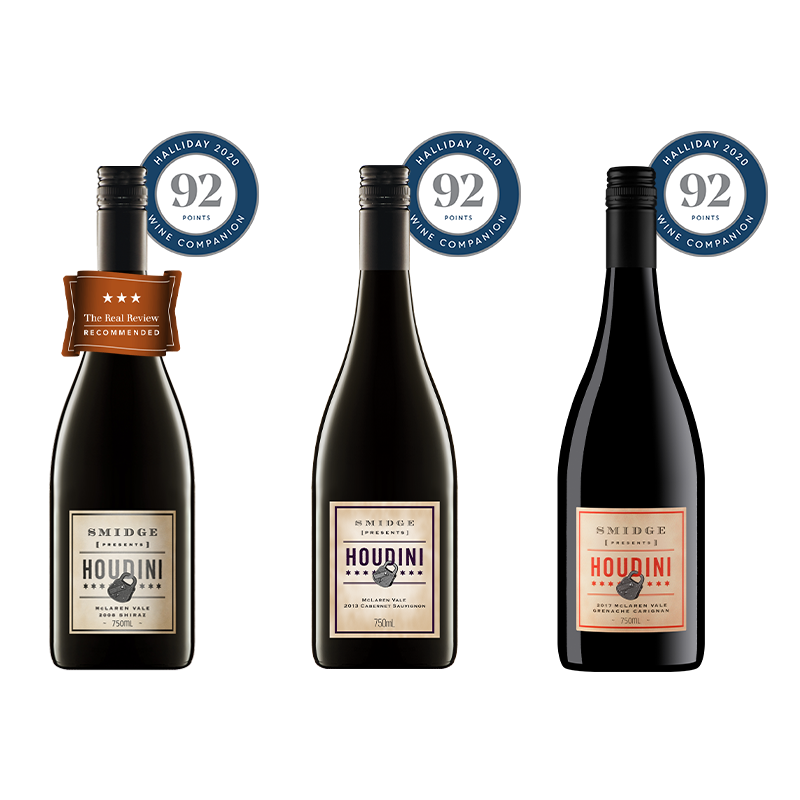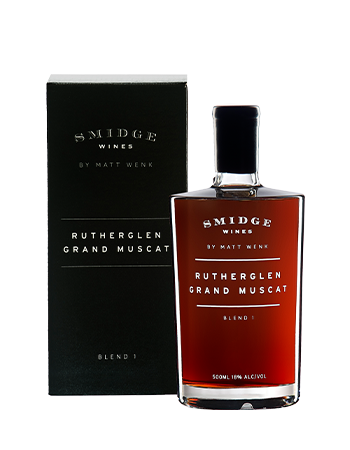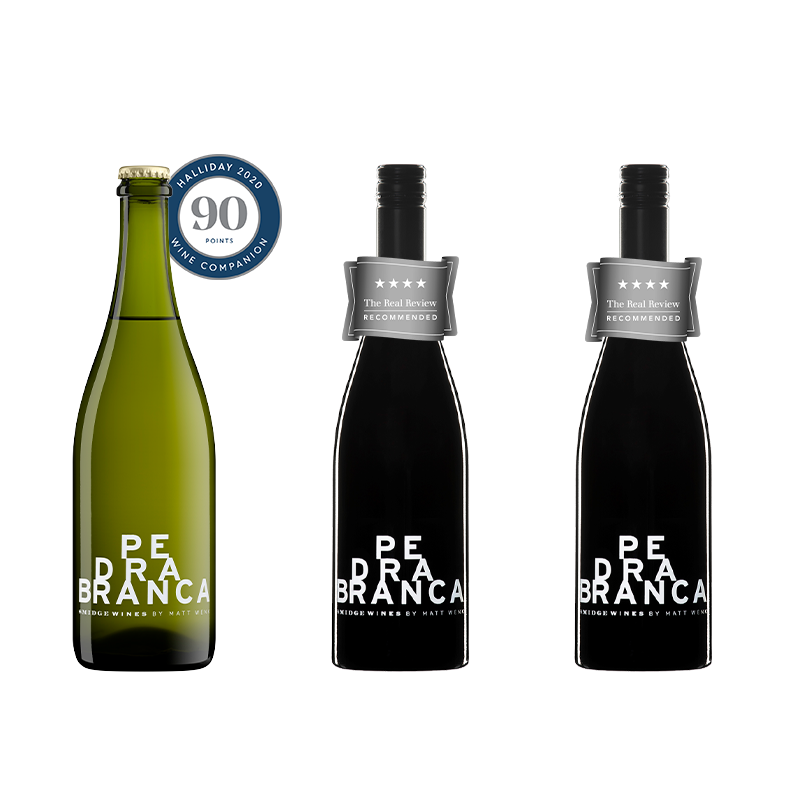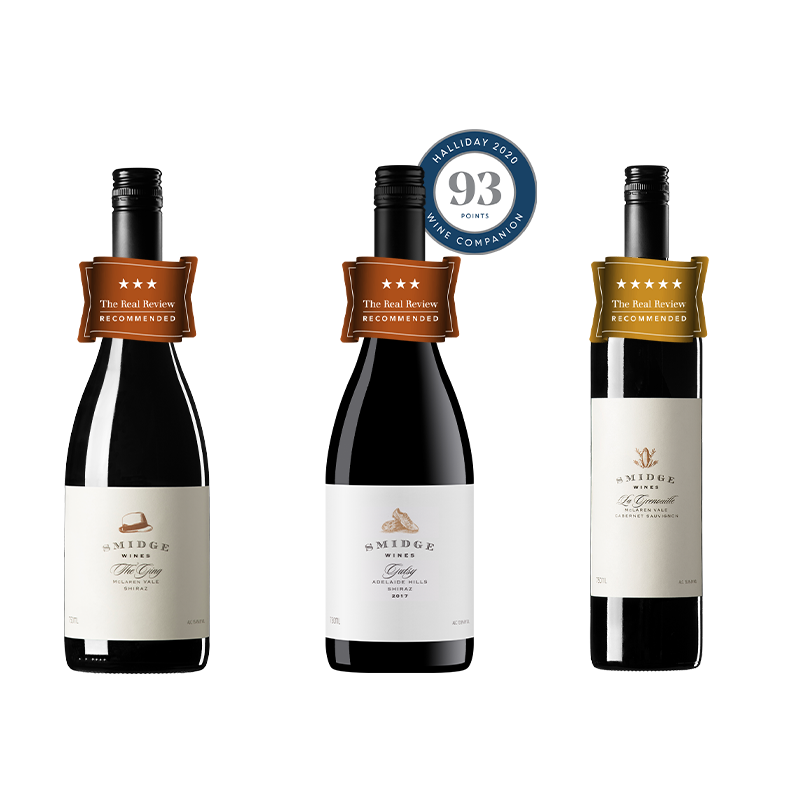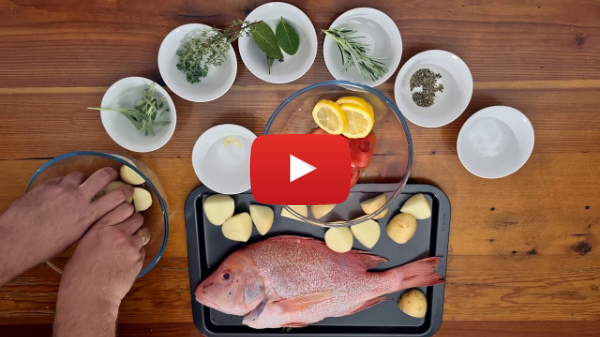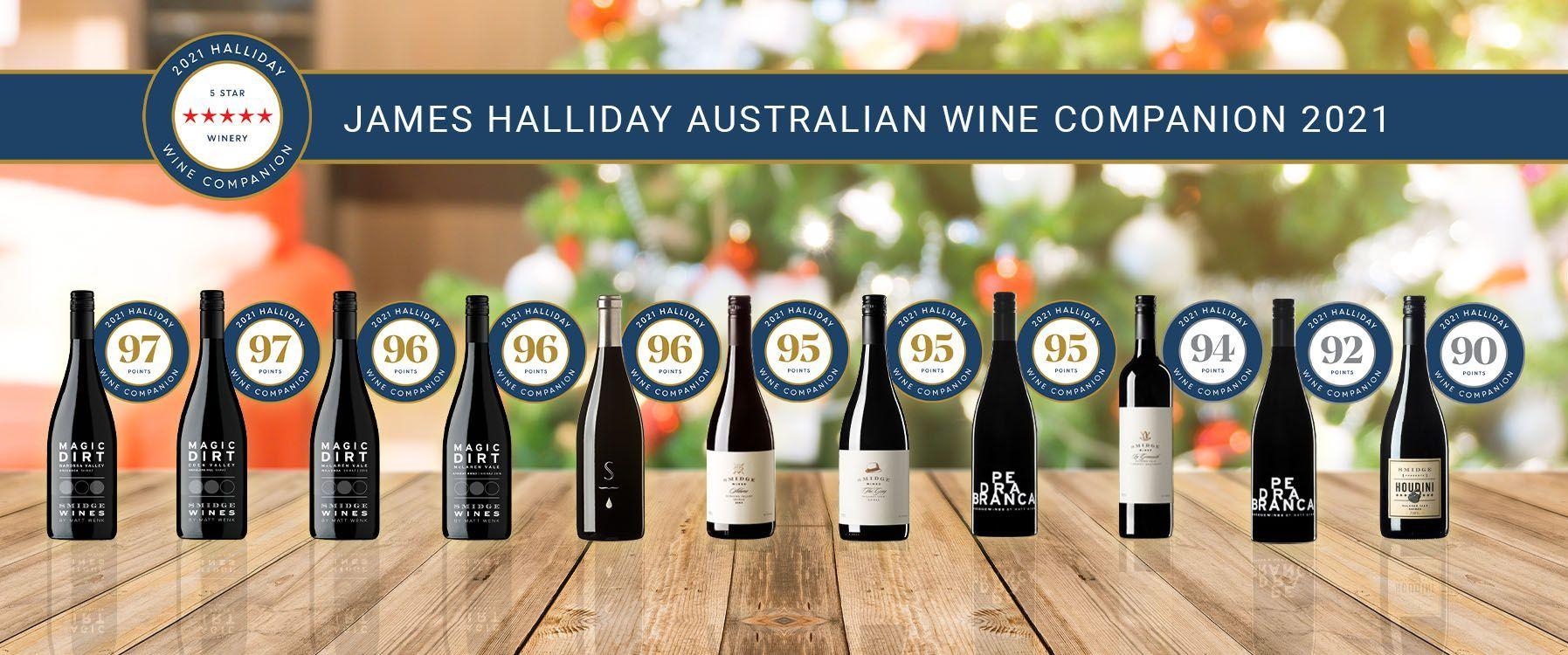Latest News From Smidge Wines
Natural - accidental - authentic wines and vineyard expression (the sense of place)

Over the years, I have read articles, spoken to people and tasted wines associated with the natural (natty) wine movement and have slowly picked up a spectrum of knowledge that I keep in the back of mind during vintage and the winemaking process. Wine is a wonderful thing and whether you are associated with the industry or a consumer, trying different varieties and/or styles of wine is a fascinating experience. Over the years, I have tried a broad range of “natural” wines and many were memorable for the right reasons, while some unfortunately were not!
The three names appear in the heading because there is no universally accepted name or definition. “Natural” wine is the most common name, and a wine under this banner can be described as one that comes from fruit grown sustainably, picked at moderate sugar levels to avoid excessive alcohol, made with as little or no manipulations or additions as possible, be fault free and ultimately exhibit characters that only reflect their origin. It has been seen that a number of those who align themselves to this regime suggest that the wines made by other more “conventional” winemakers are not “natural”. Grapes by sheer definition are natural and so a resultant wine, too, should be described as natural. I agree that in some situations, with the use other processes/aids and the addition of other compounds, one may describe the resultant wine to be very different to what you may expect or for arguments sake, “unnatural”.
Myself, as a winemaker, like many others do strive to minimise our inputs during the winemaking process and therefore a number of Smidge’s wines have no major adulteration during the winemaking process, such as acid adjustment and only see sulphur dioxide at moderate to low rates of addition after primary fermentation (white wine) or malolactic fermentation (MLF, where malic acid is converted to lactic acid – red wines), which may occur several months after vintage and then a slight adjustment at bottling.
If fruit is picked in pristine condition at optimal ripeness, with good flavour and lively acidity, fermented cleanly, pressed off and put to physically and microbially clean oak, it is amazing how vibrant and clean a wine can be after a number of months without any SO2 addition to help protect against oxidation and microbial spoilage. Once MLF has completed, then I do rack the wines from barrel and add a moderately low level of SO2 to protect the wine. We have come this far, there is no point in ruining everything now.
Great wine is made in the vineyard and then as winemakers, we have two options, respectfully guide the fruit through the process maintaining quality or alternatively, just be lazy and ruin the wine, plainly and simply. I know which I prefer. As a winemaker, our goal should always be the methodical and intelligent nurture of the varying concentrations of site-specific compounds in the fruit to detectably pleasing compounds in the resultant wine.
Another suggested name for these type of wines is “authentic” wines, which leans towards the fact that the fruit used in these wines must have come from vines grown organically and/or biodynamically. I can appreciate this concept to a certain extent, although many vineyards, especially in warmer regions, are grown very closely to organic principles, producing high quality fruit (such as our own Willunga block) although the conversion to organic certification is never pursued due to the time required to do so or long term economic reasons. Therefore, these vineyards should not be dismissed as not being able to produce high quality wines.
At the end of the day, vineyard expression (terroir) and fruit quality is not necessarily related to minimal intervention. Healthy, balanced vineyards grown in desirable conditions will result in high quality fruit that expresses its origins, which in turn leads to wines with great varietal and site expression, when picked in the “optimal” window and made with consistent winemaking techniques. These techniques will be a mixture of those described as modern conventional and those based on Old World ideologies. The critical aspect (for me at least) is that all of the practices implemented are thoughtfully and carefully executed to maintain the purity of fruit and the sense of place, aided by the subtle additions of sulphur dioxide (SO2) at critical points of the winemaking process to minimise oxidation and chemical reaction that unnecessarily produce undesirable compounds. SO2 is produced naturally by yeasts during fermentation and subtle additions later in a wine’s life are not taboo. The majority of small to medium proiducers are very conscious of their winemaking and in this day and age health-conscious consumers, so they are not heavy handed with their SO2 additions. More commercial wineries, relying on more consistency of product do typically (not always) add higher rates of SO2, although the levels are not high in the scheme of things, especially compared to the levels used in the dried fruit industry.
All in all, no matter how you make your wine, if the fruit is high quality, in balance and in sound condition and the winemaker looks after it during fermentation and the wine during maturation, then the bottled product should be of high quality and a joy to drink. For the consumer, wine is objective, much like food, films, music, art etc. The list is long and these are the things that help the world go round.
Cheers
Matt
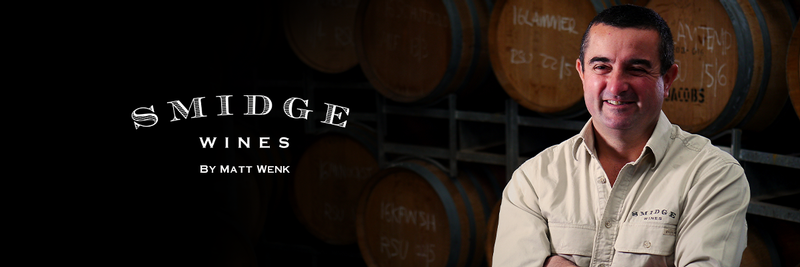
What are your Cellar Rules?
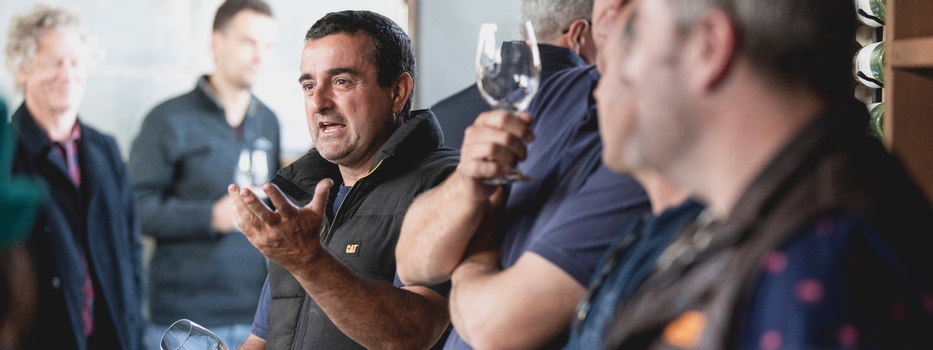
As a winemaker, and long before the Smidge brand was a reality, some household rules needed to be crafted around our cellar that avoided any unnecessary…let's say "surprises". While most of the wine in the house is consumed with family and friends – there are vintage hours, travelling, and wine dinners when I was not around to chat about a food and wine match, or if a particular bottle was perhaps best left unopened.
Equally on a wintery afternoon long before we were married (& before smart phones and google were a thing) at my now parents-in-law’s farm – my wife & her sister opened an old, and what they considered a somewhat unimpressively labelled red wine to sip over a game of cards in front of a fire. Put it this way, to date they’ve still not been able to replace that bottle – at least both will attest it was delicious!
With that memory indelibly etched in their history we decided household guidelines might be useful. Now we both consider our cellar marital property and what is mine is hers and vice versa - however every now and again there is a professional prerequisite for certain bottles not to be opened on a whim or at least so I could taste it.
We discussed having a rack that was a "free for all", anything in it could be taken, opened, cooked with, we talked about knowing vertical sets, specific vintages, or collected wines that maybe should not be in the racks of first reach. We discussed further study – not my best suggestion.
We decided these were impractical and would lead to nothing being taken from our cellar for 6 months a year. While our cellar is modest – like all cellars – it is at it’s best when it is used – that means a bi directional flow – as many wines that go in should also go out!
So we ended up with a simple 2 bottle rule – if there are 2 bottles or more of a particular wine, then either party can take whatever they wanted. While the system is not perfect it has worked well for the last upteen years. There is one exception that I can remember – a 6 pack of Roberto Voerzio Barolo that over the course of a long vintage became 1 bottle. This taught me 1) the system worked – there was at least 1 bottle left, 2) I learnt that Trish has a good palate and knows a good wine and 3)she learnt to google the cost per bottle before depleting the 6 pack (almost) in entirety!
No doubt as our children get older and begin to show an interest in wine, I am sure this rule will need some adjusting – or maybe we just need a lock!
Questions from the Cellar Door
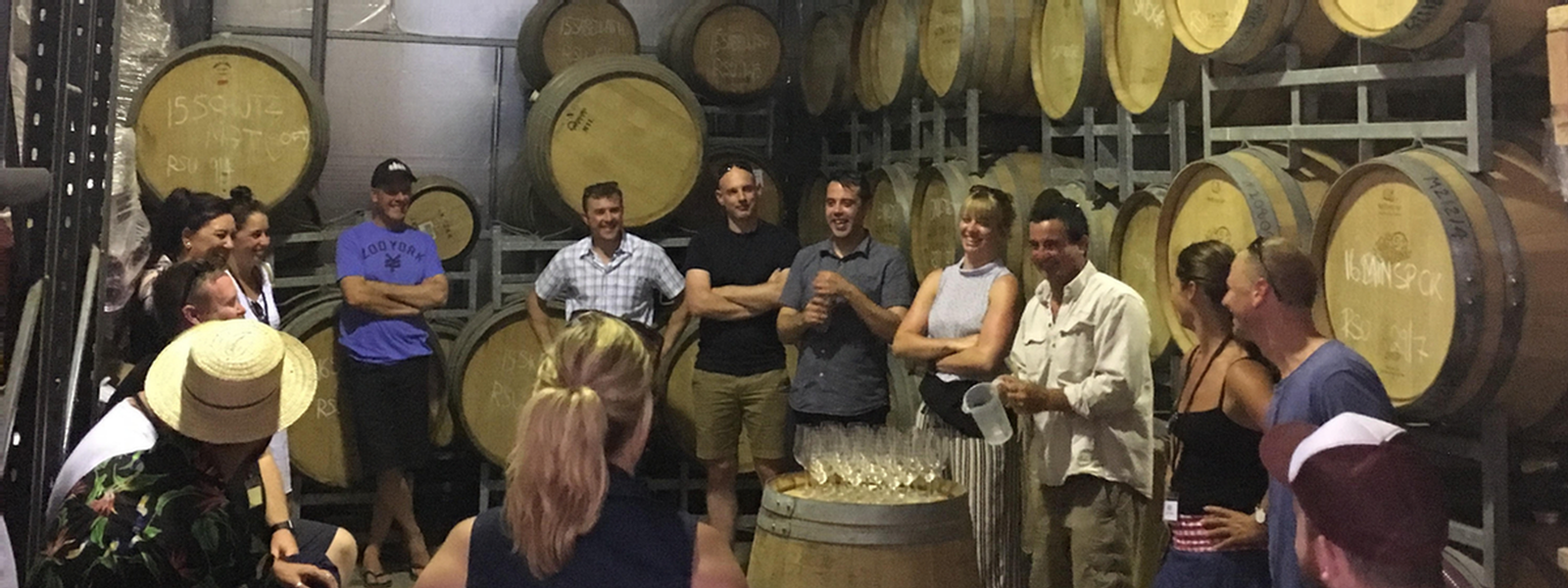
What do you drink at home?, Do you drink your own wine? – As a winemaker at the Cellar door, or at nearly any social situation I can think of I am almost always asked these questions. The follow up question is often ‘Do you ever get to enjoy wine – or is always work?’.
The first part of my answer can be jarring – sometimes I don’t drink wine at all! After a day of barrel trials, or tasting I’ll often have a cold beer or sparkling water – to cleanse the palate, refresh, hydrate and reset.
Then there are the nights I’ll bring home a trial blend to try with dinner, or dust off an old vintage to see how it is faring – testing closures, storage and generally how it is developing relative to my expectations of that vintage.
Equally, I love trying the efforts of someone else’s blood, sweat & tears. Both locally & internationally, I enjoy comparing vintages, varieties & styles and see how we compare. Then there are the times we’ll open a special bottle whether it is a cheeky glass of fizz or something else we’ve collected along the way – it might be for a celebration or just because.
I’m also a fan of trying anything I can get that is a little different no matter where it is from or what variety it is. It’s important to me to understand what is happening and not to restrict my frame of reference to what I make, and like to drink.
More recently after a visit from a generous mixologist at the cellar door I’ve been playing with some cocktail style drinks using wine (currently Muscat) as a base – it’s early days and I’ve had more misses that hits – but I’m enjoying the challenge – Watch out – there’s more to come here.
And to answer ‘is it always work?’ Absolutely not! How can drinking something delicious with good food and good friends be work? As the saying goes - If you love what you do you’ll never work a day in your life!’.
Are these crystals in my red wine "Diamonds on the Inside"?
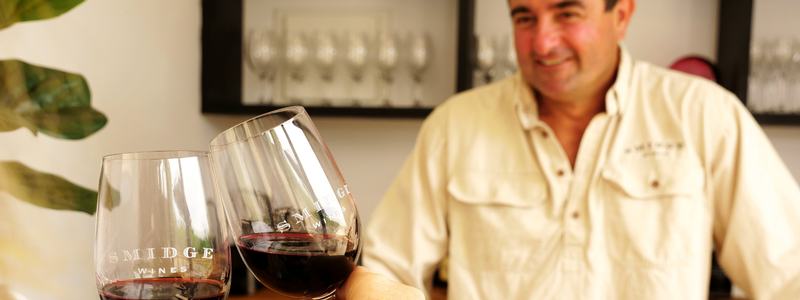
Well, in a nutshell, yes. These crystals form from tartaric acid that overtime ‘fall out’ of the wine and are called "tartrates". Their presence does not mean there is something faulty or wrong with the wine – in fact we feel it is quite the opposite.
Briefly, tartaric acid is the predominant natural, harmless acid in grapes and subsequent wine. It plays a vital role in the stability, pH, colour, structure and taste of finished wine.
A part of tartaric acid’s solubility is temperature dependent, as such when a wine is chilled for an extended period, the unstable form of tartaric acid will "crystallise" and precipitate out creating crystal deposits or ‘tartrates’. These tartrates often capture varying levels of colour and tannins in them.
During the aging process in the barrel a portion of the unstable tartrates precipitate out binding to the walls of the barrel. Once emptied, the barrels are steamed and /or washed to remove the tartrates and lees, although some remain dissolved in the wine and may precipitate out later in the bottle over time forming what often is referred to as a "crust".
So why do not all red wines have these crystals? Well some may be too ‘young’ and not enough time has elapsed for the crystals to form, or the conditions have not been conducive, or maybe the wine has minimal unstable tartaric acid remaining at the time of bottling due to the variety or season. Alternatively, some wineries may, for aesthetics, decide to remove all crystals through a process known as cold stabilisation. Prior to bottling, the wine in question is chilled to a sub zero temperature for a prescribed period to force the unstable tartrates to precipitate.
What about Smidge Wines? As a specialist winery, handcrafting wine of extraordinary quality in small quantities we view the presence of tartrates as showcasing our winemaking philosophy in action.
We believe that each intervention and action we make throughout the journey of every wine is done balancing the risk of action against the benefit to quality, flavour & stability. We view that no matter how carefully it can be done, artificially cold stabilising will change pH and acidity, and independent of the number of trials that can be done, it risks having some influence on the balance, structure, hue and flavour of a final wine. Sometimes these changes can be subtle, other times more noticeable.
We prefer to avoid this risk, and allow these interactions to occur naturally in the bottle over a number of years. So to answer the question – yes, we think these crystals are definitely diamonds!
Vintage 2021 - A Silver Lining?

It’s no secret the Australian wine industry has taken a beating over the past year – one of several casualties of restrictions across hospitality both here and overseas, as well as tariffs effectively closing Australia’s biggest wine export market.
With such uncertainty in the air, Vintage 2021 felt a little different to previous years (even against 2020) - the urgent phone calls to find any extra fruit even after some recent small vintages seemed to evaporate. This year, the appetite to take advantage of extra available fruit disappeared as many wineries found themselves very carefully managing intake against forecasts, contract commitments and in some cases, space availability.
Thankfully, for our regions we source fruit from, the weather has been kind. In a La Linea cycle which typically means a cooler wetter summer, we were initially a touch nervous, although in South Australia, we experienced the cooler conditions, without the rainfall – we managed lovely long ripening conditions, with flavours and sugar staying in balance. With no extreme weather events forcing us to pick earlier (or later than we would like) as well as fruit being ready in a staggered way, we were able to keep pressure off the winery and ensure optimal time on skins before pressing each ferment and putting wines to barrel.
The winemakers I am talking to share the confidence I have in 2021 Vintage – it is an absolute cracker and one to watch out for – and just the tonic for an industry in much need of some good news!
What is my Favourite Wine?
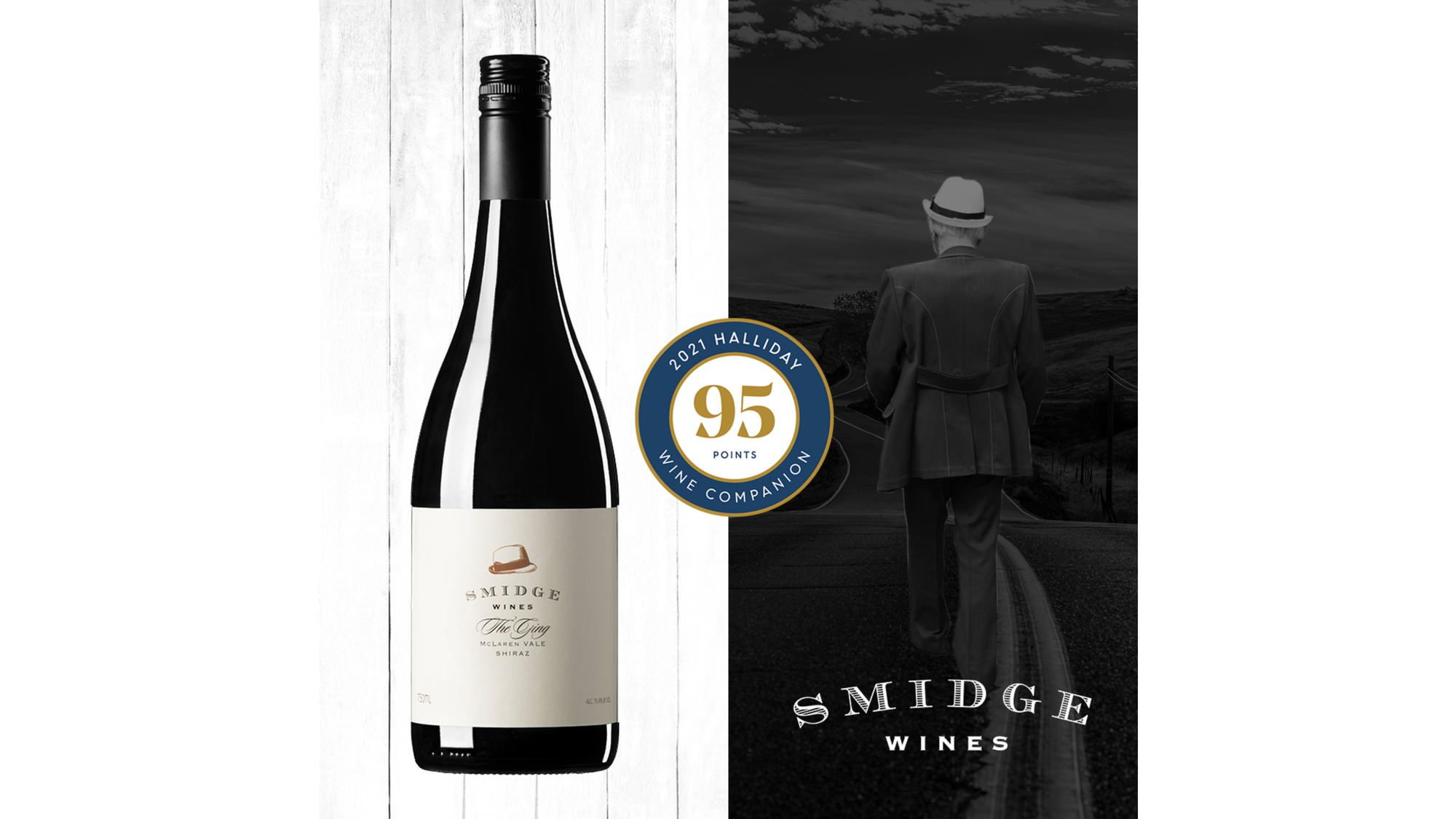
“So what’s your favorite wine then?”
I smiled, this is a question I get asked a dozen times a day, especially at a wine tasting and it’s one of my favorite questions to answer.
Of course I reply, like any dutiful parent, “well it’s kind of like answering ‘who is your favorite child?’ I love them all equally, of course.” But I always say it with a cheeky grin and a wink. I know this is a game, it’s a dance back and forth and I love it.
They always push for a true answer though, “oh surely you have one you love more than the others,” sometimes they’ll often wink and whisper conspiratorially “I know I have a favorite child.”
I’ll laugh, enjoying the moment and reply, “honestly, it’s simple,” no doubt a twinkle forming in my eye. I love telling this story, I love sharing this wine, this is my favorite of all.
“It’s The Ging,” I tell them and chuckle at their look of confusion.
It’s almost always confusion, sometimes astonishment. The Ging isn’t our most expensive wine nor is it our most awarded, though it does have a trophy cabinet overflowing with awards all to itself. Most people expect me to proclaim one of our more expensive bottles as my personal favorite.
But The Ging is my favorite because it’s exactly what you would want a McLaren Vale Shiraz to be, it’s bold and bright on the palate with subtle hints of chocolate and dark berries. It’s a true and honest wine, but it also has just enough of that roguishness and devil may care attitude we all love so much about our Australian way of life.
The Ging is my favorite because it embodies all these truly special qualities and in doing so, it is the perfect homage to the man himself, a man who has been a very special force in our lives and one for which we will always be grateful.
The Ging is also one of my favorite wines to make, throughout the process there is always an air of anticipation. I put it in French oak barrels (7% new) to mature it until the flavours are perfect, sometimes it takes up to 2 years or longer for this process to occur.
Every few months or so, I taste test our barrels, noting each’s progression through the process. There’s a very unique palette that makes a barrel suitable for the Ging and not every barrel will fit the bill. The oak I put it in plays its part too, being a natural product, it makes for subtle variations during the maturation process.
As the wines mature in the French Oak and each barrel taste test reveals more of the wines character, it’s the fuller, more complex barrels that I ear mark for the Ging.
Finally, it’s bottled and we let our faithful Smidge community know, (our Smidge family of clients, always get first pick, especially as there’s always a limited number of bottles) and then it goes to market.
I think, most importantly it’s my sentimental favourite – named in honour of my Grandfather who I adored (as did all his 11 Grandchildren). For me this was more than an honoring of my childhood memories, it was a nod to him as a man with how he lived with endless energy, big ideas, and an even bigger heart.
This is the reason why the first bottle of each vintage of the Ging, comes home with me and over a nice dinner, Trish and I toast the man behind the name and remember the loveable rogue who meant so much to both of us.
The Story of The Gutsy
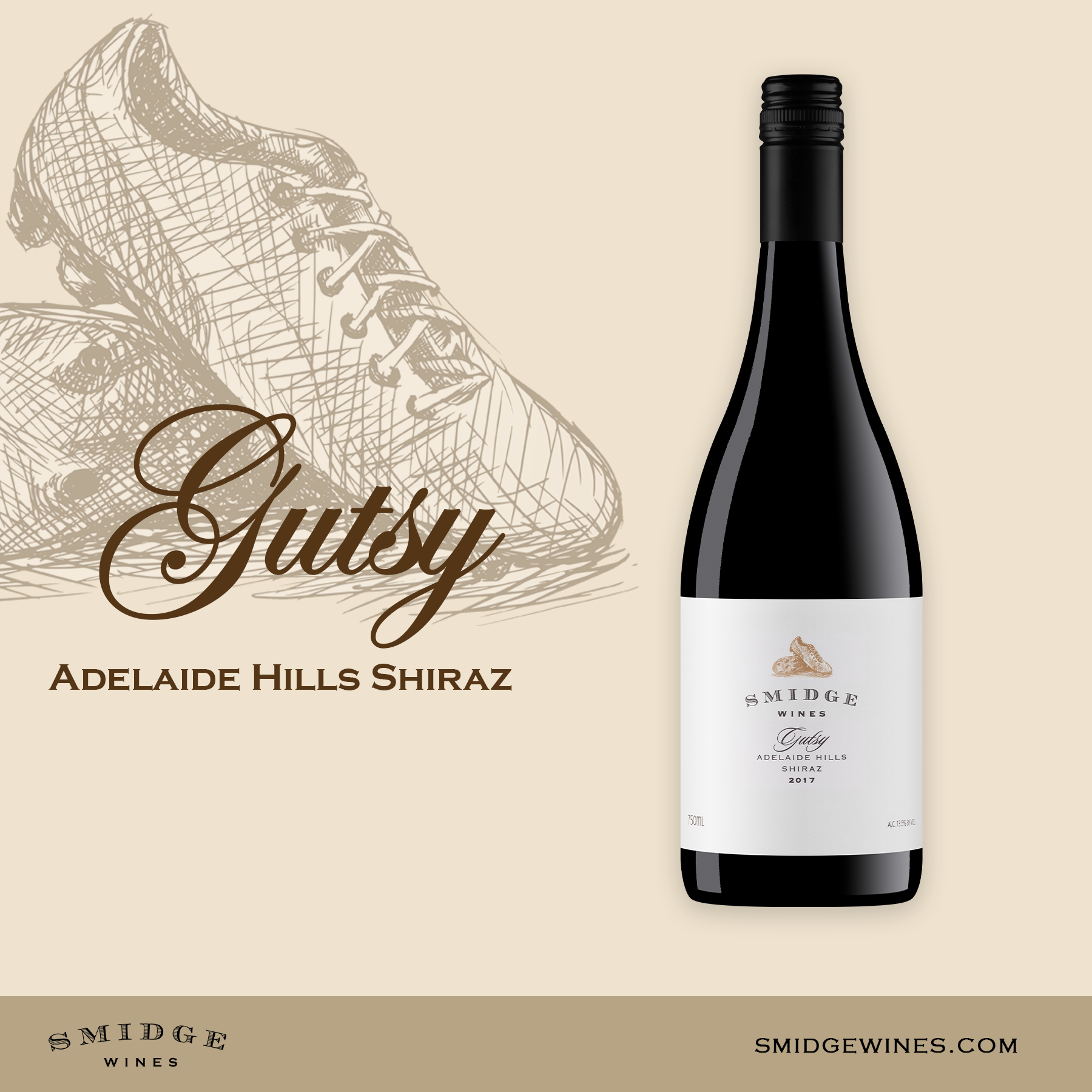
“Surely this is from the Barossa!” a wine lover exclaimed at our cellar door, “a shiraz of this quality is unlikely to be produced anywhere else,” he continued matter of factly.
His companion immediately countered “No, no this is definitely a McLaren Vale Shiraz, you can taste it in its bold fruity palate. ”
I simply smiled at them both, knowing the true origins of the 2017 Gutsy that they both were currently swishing around inside their mouths.
I wasn’t going to tell them that this Shiraz had come from a little Kuitpo Vineyard in the Adelaide hills, not yet at least, I was enjoying this too much.
Often, people find it difficult to believe that an Adelaide Hills Shiraz can live up to the lofty standards set by its cousins in the Barossa Valley and McLaren Vale.
To be fair, it’s no small task, the Barossa and McLaren Vale have set the standard in Australian Shiraz and with good reason.
But, that’s how the Gutsy got its name.
Named for our young son Oscar, who has spent most of his life being the smallest kid in the class or on the football field. Despite that, he was in the thick of it and more often than not somehow ended up the ball in hand, threading his way throw the forest of bodies. It happened so often that his coach took to calling him “Gutsy.”
And so our Adelaide Hills Shiraz has become known as “The Gutsy” because like Oscar, it takes on the “big boys” of South Australian Shiraz and proudly holds its own.
The two wine lovers are still debating where it’s from, they’re not the usual suspects I see at the cellar door, maybe they’re tourists to the region, it doesn’t matter…….I’m going to enjoy this.
I slowly turn the bottle around so the label faces them clearly, almost proudly, the movement catches the eye of one and he turns to read the label in full.
“Adelaide Hills,” he murmurs, his eyebrows go up and he exhales in astonishment.
The other turns to me, grinning wide, happy to be surprised and enjoying the moment, perhaps almost as much as I am.
“Well done,” he says, “well done.”
'S'omething special
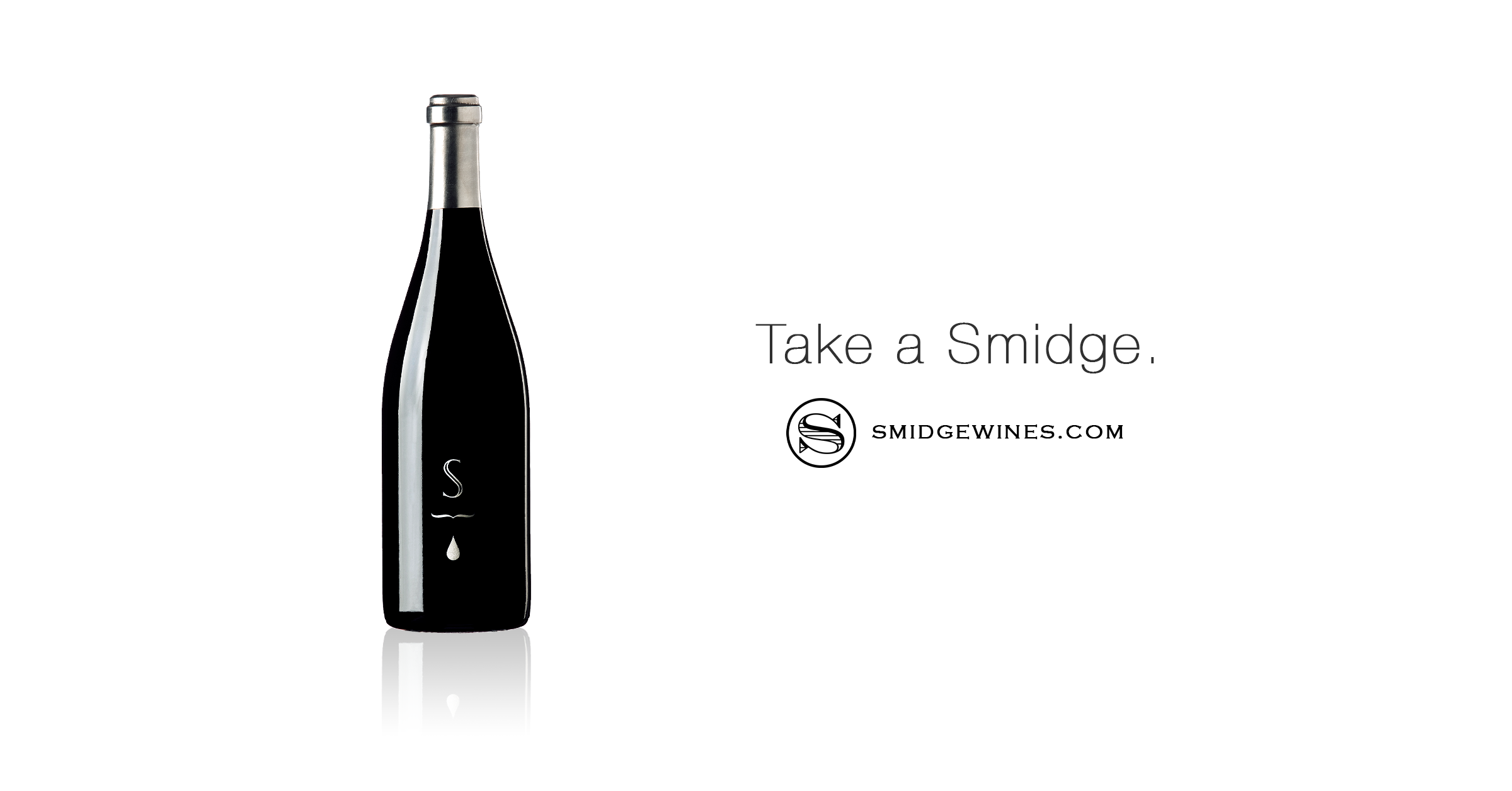 “Wow, that’s special!” I said, pulling back the glass from my lips having just tasted from one of our barrels in late 2005.
“Wow, that’s special!” I said, pulling back the glass from my lips having just tasted from one of our barrels in late 2005.
I pulled the chalk out of my pocket and marked the barrel with the unique symbol that declared it earmarked for something special.
I truly believe, every winery needs a top-of-the-tree, high-calibre wine and so this barrel and a very select few like it would go on to become our very first vintage of the Smidge ‘S’ in 2005. That year it would be nominated for the George Mackay Trophy for Australia’s Best Exported Wine.
Marking the barrels, classifying them has become a process that I truly enjoy but its also critical, especially when it comes to the ‘S’.
When you press each fermenter, you experience a level of quality that is a combination of flavour and structure and then the journey begins…..to start sorting the pieces of the puzzle of where each parcel might end up.
The ‘S’ represents the best barrels of Shiraz, specifically chosen to showcase the best attributes of soil and growing conditions in the different subregions of the Barossa Valley. ‘S’ comes from the word ‘Smitch’, which is the Celtic word that ‘Smidge’ was derived from.
The barrels of wine will mature slightly differently, some remaining fruit driven, while others pick up nuances of oak, then over time complexity builds. Even after the best barrels are identified and marked with their own unique symbol, various blends of each are trialed until the final ‘S’ is created, with some of the original barrels selected missing out at the final cut.
This is one of the reasons why, each bottle of ‘S’ is approximately 4 years in the making, it’s an adventure in patience, persistence and excitement, all for the love of creating a wine that is truly special.
Since 2005, our ‘S’ has grown to become everything that we hold dear, everything that we want Smidge Wines to be. A wine for people from all walks of life who just love and appreciate a bottle of something special and the amazing experience that comes with it.
You might say that the Smidge Wines ‘S’ is a smidge of everything that is Smidge Wines.
Important Note: Each vintage of 'S' is often heavily pre-sold, we try and keep a few dozen aside for sale on the website so everyone has an opportunity to enjoy something 'S'pecial. The latest vintage release, 2016 is no different, with 80% pre-sold. To secure a bottle or two for yourself, please visit the 'S' purchase page.
-Matt
Gifts for Him
The story of the Pedra Branca Saperavi
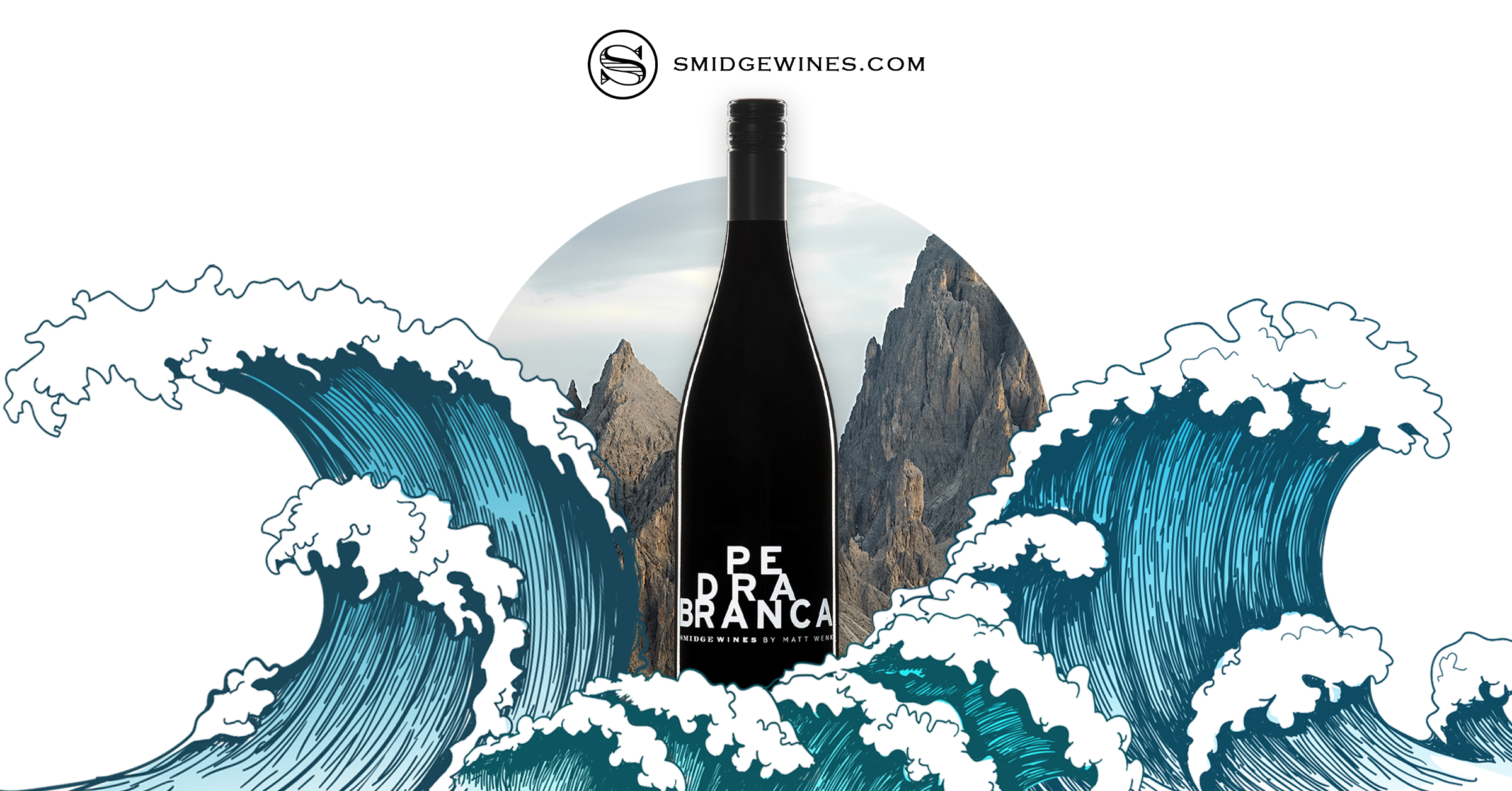
Highlighting the wonderful flavours of varietals that are not well-known in Australia is one of the great pleasures of owning Smidge Wines.
It’s an opportunity to offer a rare, even unique experience with Australian wine that complements local favourites such as Shiraz, Merlot and Cabernet Sauvignon.
We have several so-called “alternative varietals” available at the moment, including a Tempranillo, Montepulciano, Grenache and Grenache Carignan.
A Smidge varietal that is making a splash right now is our Pedra Branca Saperavi, which hails from the McLaren Vale.
It won Equal Top Gold last year at the Australian Alternative Varieties Wine Show. And while making wine isn’t about gongs and plaudits, it was a great feeling to have this marvellous wine recognised.
In the journal Real Review, Nick Bulter gave it 91 out of 100 and observed its “dense, opaque purple colour”, and he wrote of its “earthy aromas of bitumen and rosemary with red-toned red berry fruits”.
“It’s juicy and fresh on the palate, syrupy raspberry liqueur notes tapering into black olive and dark truffle savouriness,” he said. The tannins were “soft and plush – rare in this variety”.
Rare is an excellent description of our Pedra Branca Saperavi. The grape originated from Georgia and was planted in many republics of the former Soviet Union. It is unusual because it had red skin and flesh, which gives the wine its rich, dense colour.
During the communist era, it became a favourite grape for semi-sweet and fortified wines because its high acidic levels made it perfect for blending. The fact that it can survive extreme cold before flourishing in spring and warm summers made it ideal for the old Soviet Union.
But the Saperavi grape also thrives in the warm days and mild nights of the McLaren Vale, where it has been growing for a decade.
For those of you who like pairing their wine with food, I’ve found it delicious with game and other rich, meaty dishes. With its fulsome flavour and deep, intense red colour, it’s ideal winter-time drinking.
If you’d like to experience this wonderful McLaren Vale varietal, with its history steeped in the traditional winemaking of Georgia and its popularity founded inside the collapsed Soviet Union, you’ll need to move quite quickly.
As the grape is still rare, The Pedra Branca Saperavi 2018 is a limited release with only 31 dozen made.
It’s a rich taste of history and perfect for chilly months as well as a sumptuous summer treat. I hope you enjoy it.
